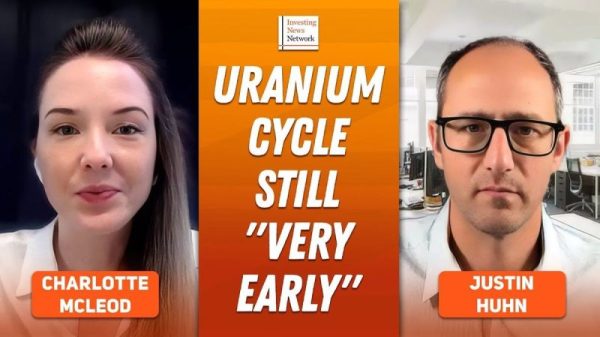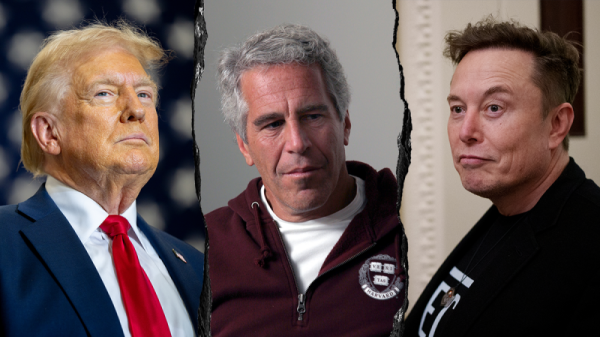Consumer Reports. You probably have heard of it, as it has been around since 1936. Since then, it has offered valuable information to assess the safety and performance of many products and services, and has come to be widely trusted. So, you can understand why we were intrigued when it issued a blurb in one of its latest newsletters about…climate change. Wait…what?
Consumer Reports maintains credibility by conducting its own evaluations based on its in-house testing laboratory and survey research center. It is lauded because its website and magazine accept no advertising, and it buys all the products it tests. As a non-profit organization, it has no shareholders to be beholden to. In summary, it is completely independent of the industries it investigates, so its evaluations are not affected by anyone or any product it reviews.
So far, so good. Its mission statement indicates that
Consumer Reports works to create a fair and just marketplace for all. As a mission-driven, independent, nonprofit member organization, [Consumer Reports] empowers and informs consumers, incentivizes corporations to act responsibly, and helps policymakers prioritize the rights and interests of consumers in order to shape a truly consumer-driven marketplace.
We applaud Consumer Reports for its work in maintaining integrity within the marketplace of goods and services.
Which brings us to its latest emailed newsletter (which does not appear to be online). It doesn’t focus on a comparison of gas-powered clothes dryers or the best electric vehicle you should buy based on safety, features, ease of refueling, combustion potential of the lithium battery, or any other consumer-oriented criterion. No, its topic is climate change.
Seemingly out of character, the newsletter begins, “with Earth Day approaching, Consumer Reports has put a price tag on the potential failure to deal with climate change.” Then, in bold print, it proclaims that the price tag is “nearly $500,000 in extra costs to a baby born this year — an enormous financial burden for future generations.”
Where does Consumer Reports get this figure?
Although Consumer Reports usually provides numbers, these numbers fall short of being facts. If for no other reason that, contrary to the expectations of the United Nations Intergovernmental Panel on Climate Change (IPCC), it assumes (as an online article acknowledges but the newsletter doesn’t mention) a “’high emissions’ scenario, which represents a [so-called] consensus view of what will happen to global air temperatures if we remain on our current trajectory without additional mitigation efforts. Under that scenario, greenhouse gas emissions would roughly double and average air temperatures would rise more than 4°C (7.2°F) by 2100.”
That by itself inflates emissions, consequent warming, and, therefore, the estimated costs of climate change. Although the article (but not the newsletter) acknowledges that a “’low emissions’ scenario posits a faster shift to sustainable practices that result in carbon dioxide concentrations peaking around 2080 and air temperatures rising 1.5°C (2.7°F) before beginning to decline in the last decades of this century” — which the IPCC says is far more likely and would entail lower costs. The newsletter never tells us what the “low-emissions scenario” costs would be but gives us only the higher costs driven by the “high-emissions scenario.”
Be that as it may, the newsletter notes, “Consumer Reports wanted to detail concrete examples of what the financial costs of climate change can be for our kids and grandkids.” So, what did it find?
First up, housing:
Extreme weather-related damage can significantly increase the cost of repairing, maintaining, and insuring a home. The study estimates climate change could lead to an increase in housing costs of $125,000 over the lifetime of a person born in 2024.
Of course. More hurricanes and storms, more high winds, more flood waters, more heat, more snowfall — more of all the devastating things that are supposed to come from climate change — will gut your treasured abode.
Yes, if these events really did become more frequent and severe, they would do more damage to homes, and regardless of whether they do, insurance companies could take advantage of this scare by raising premiums. But in the world of real meteorologists and climatologists, we simply are not seeing an increase in the frequency or intensity of extreme weather. Indeed, in theory, a warmer world should be a less variable world, because poleward latitudes warm more than those near the Equator, reducing the differential that weather systems seek to equalize.
Next up, energy:
Climate change is expected to increase the cost of heating and cooling a home. A rise in extreme weather conditions can also threaten power plants and other energy infrastructure, which could lead to expenses that companies pass onto their customers. The overall increase in lifetime energy expenses is an estimated $88,000.
We can see why cooling costs should go up, but wouldn’t the cost to heat your home decrease in a warmer world? Ah, yes, but — weather weirding. With global warming, we’re told, there must be more of everything, including cold outbreaks.
Nonetheless, we would argue that the transition to wind and solar energy is a far bigger threat to household energy costs. So called “renewable energy” is unreliable, intermittent, and expensive — not to mention the vast costs of expanding high-voltage transmission lines to service remotely-located wind turbines and solar arrays and of installing millions of charging stations for electric vehicles. If we are forced to use a higher percentage of wind and solar sources for our energy needs, energy costs will skyrocket and the available energy to run our heaters and air conditioners will plummet.
So, Consumer Reports’ estimate of $88,000 due to climate change is, in our view, far lower than the costs we will see if our power grids are forced to abandon coal and gas in favor of wind and solar.
Then comes food:
A changing climate is expected to disrupt food systems, reduce access to food, and lead to higher food prices, driving up lifetime costs for a 2024-born American by an estimated $33,000.
With an average life expectancy of about 76 years, that would amount to just over $500 per year, or $10 a week increase in added food costs. We’ve experienced that much in just the last three years, and it has had nothing to do with climate change.
But again, we will argue that, for several reasons, this is far less than the cost increases that will be imposed on food if we try to slow or stop global warming, as Consumer Reports urges us to do. If transportation networks adopt “Net Zero” standards, we will be forced to move food to market using electric trucks and trains — more expensive to build and operate than their internal-combustion counterparts. The never-ending quest to cover our farmland with solar panels and convert the crops we do produce into ethanol will reduce the supply of food, further driving up costs. So will banning nitrous fertilizers, since nitrous oxide is also deemed a “pollutant” because of its (relatively insignificant) contribution to global warming.
We’re not sure if the ultimate goal of this Consumer Reports newsletter is to scare parents into not having children or to scare children away from having traditional families. It might be, because later the newsletter proclaims, again in bold print, “Scary? Yes.” But no, actually the tact they take is the same one to which many environmental organizations recently have resorted. Scaring the public into action simply does not work — indeed, Chicken Little can proclaim only for a short time that the sky is falling until people begin to see through the ruse that Chicken Little is really Chicken Liar.
So, the new tact taken by the environmental alarmists — and by Consumer Reports — is that things are not hopeless, because, they claim, this $500,000 in added costs can be dramatically reduced if we work together to reduce greenhouse gas emissions and make other critical decisions.
Consumer Reports pushes subscribers to join in their efforts to usher in a sustainable future by giving their readers “information you need to lower your costs today” and inviting them “to a broader discussion about what we can do together to make real change!” The closing exclamation mark is supposed to entice you to jump on the “Sign Up Now” button.
The newsletter was signed by Drew Toher of Consumer Reports. On the Consumer Reports website, Mr. Toher lists himself as a “campaign manager of community and corporate engagement” with expertise in — what? Climatology, atmospheric science, energy engineering, energy management, or environmental economics? Anything relevant to estimating the costs climate change will impose on people? No, his expertise is in “sustainability.” He focuses on initiatives that promote sustainable, energy-efficient choices for consumers. In other words, he is an ESG officer.
Perhaps the author of Consumer Reports’ online article from which Toher drew was better qualified? No. Scott Medintz is an editor, writer, and content strategist for Consumer Reports with a BA in English Language and Literature and an MA in English and American Literature.
That explains quite a bit.
But something else bothered us about this Consumer Reports newsletter. As we mentioned earlier, Consumer Reports is widely known for its independent testing, done in its in-house laboratories. It does its own research and makes its own decisions. But this newsletter deviates from that model. Its figures are straight from the alarmist narrative. Could it be that Consumer Reports hired a cadre of climate scientists, energy experts, or environmental economists to provide independent testing? Or might it have deviated from its model just this once and simply parroted these figures from another source?
The answer is right in the online article’s introduction:
You might have heard that climate change costs the United States economy hundreds of billions of dollars a year. Or that globally it’s expected to cause trillions worth of damage annually by 2050. But huge numbers like those are so abstract that it’s hard to see how the cost of climate change might affect our everyday lives. So a new report commissioned by Consumer Reports…might snap some of us to attention.
Wait, “…commissioned by Consumer Reports.” This certainly deviates from Consumer Reports’ standard operating procedure of doing its own, independent investigations without bias or external influence.
So, we wondered, just whom did they commission? Well, the article tells us:
…a new report commissioned by Consumer Reports and conducted by ICF, a global consulting firm that conducts climate studies for businesses and governments…
ICF International Inc. was born as the Inter-City Fund in 1969 to finance and help minority-owned businesses apply for and secure governmental contracts. Since then, its focus has shifted radically. Today, it is the most important environmental organization you have never heard of.
ICF International Inc. staffs the United States Global Change Research Program (USGCRP) in the Office of Science and Technology Policy within the Executive Office of the President — a little-known fact one of us (Legates) discovered when he served as the executive director of the USGCRP. It provides a yearly report on climate change to Congress called Our Changing Planet and is responsible for the content of the climate.gov website. In 2022, its annual budget from the United States government was a stunning $3.6 billion; In 2024, it topped $5 billion — an increase of nearly fifty percent during the first two years of the Biden Administration. It’s impossible to know how much money Consumer Reports paid ICF for this study. Maybe nothing — ICF certainly had all the resources it needed without a measly payment from Consumer Reports.
In retrospect, maybe Consumer Reports is correct after all, in a twisted sort of way. It will cost a newborn more than $500,000 if current carbon-reduction legislation, racing through the federal government and many state legislatures, becomes the law of the land. But the costs of abandoning coal, oil, and gas and adopting a wind- and solar-based energy source for our country will be higher; much higher. Moreover, we must start paying closer attention to ICF International Inc, a little-known but major player in shaping our environmental future.

































